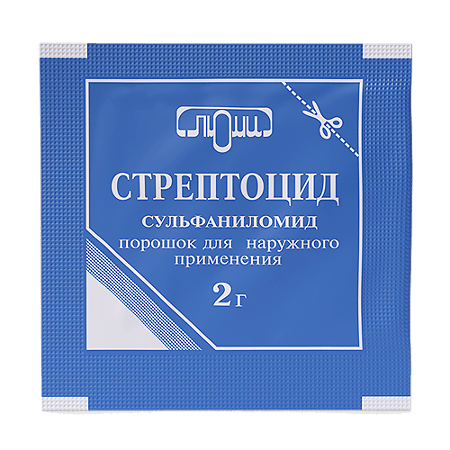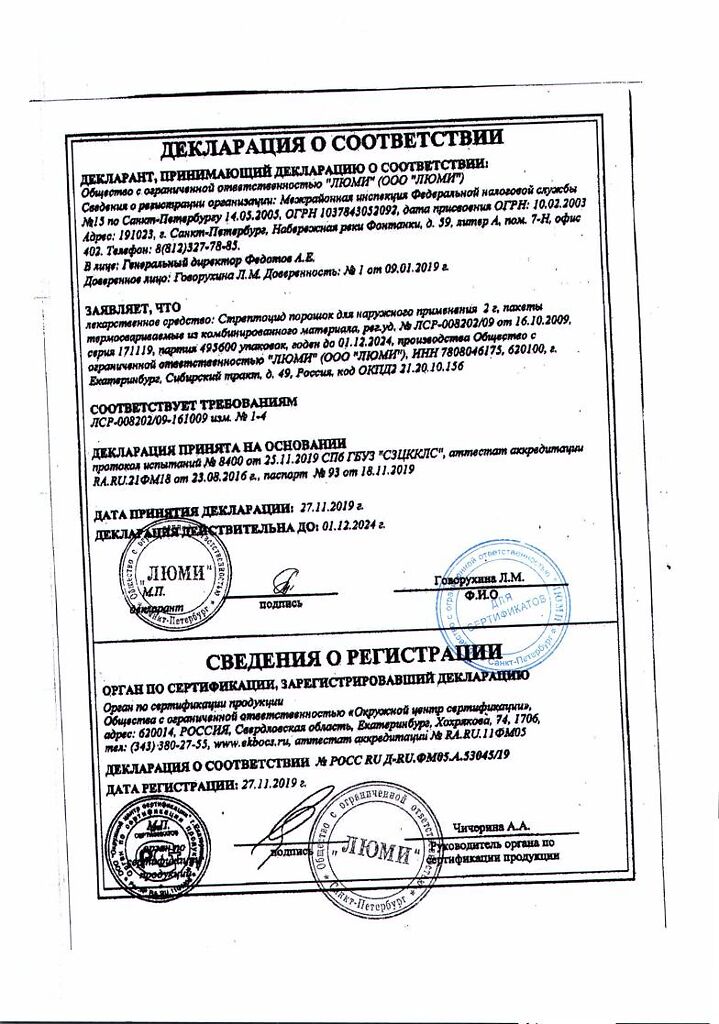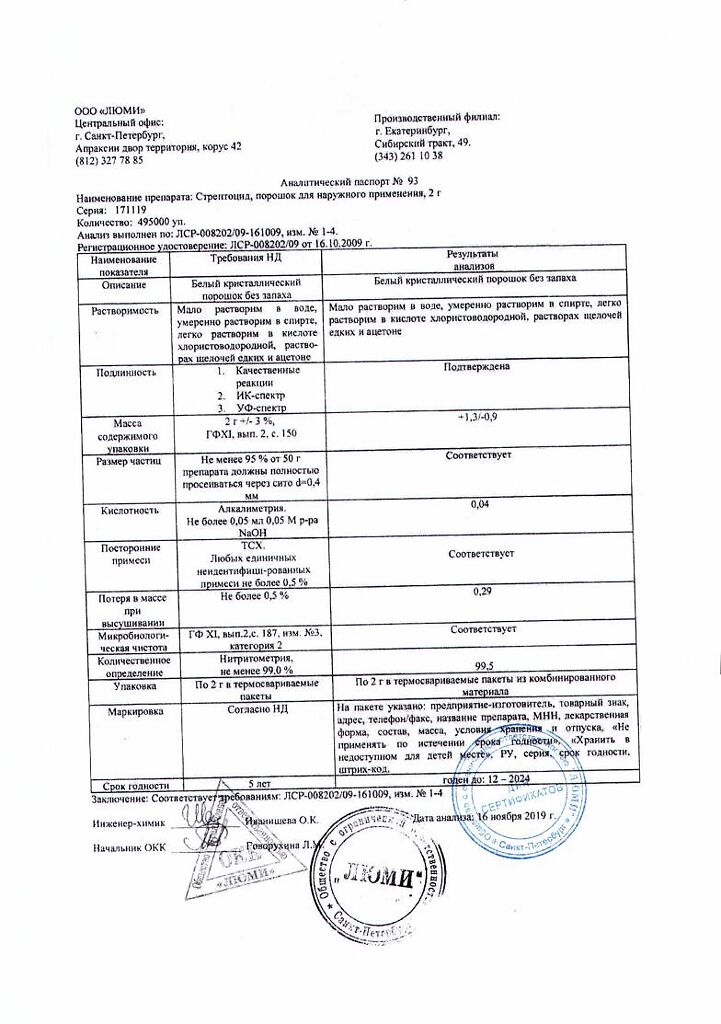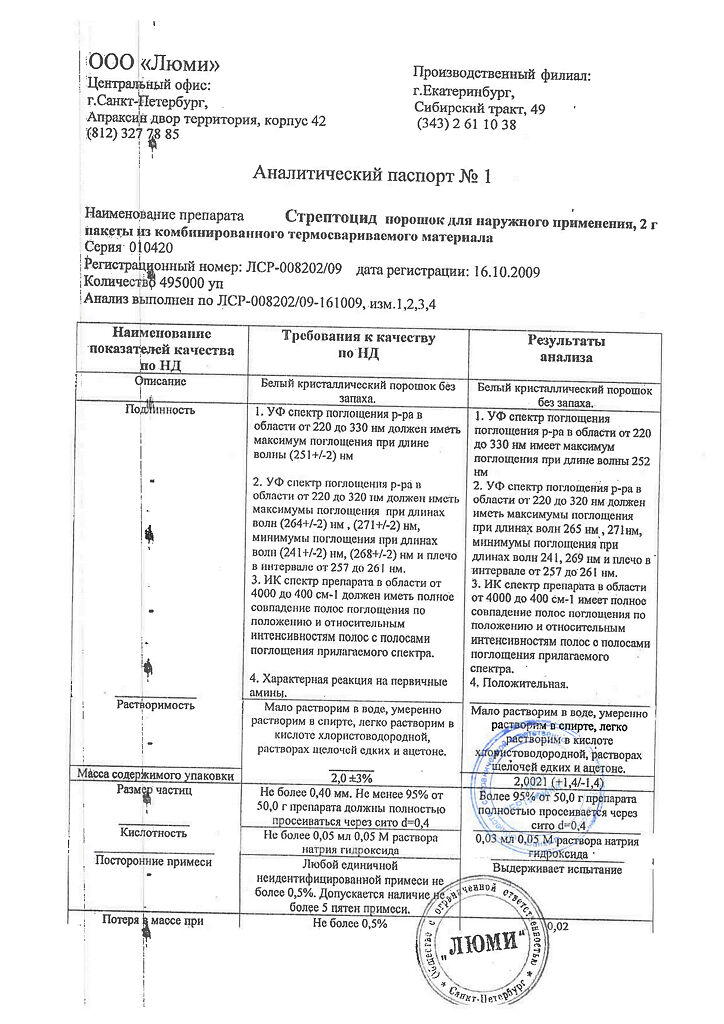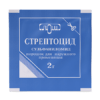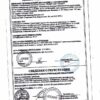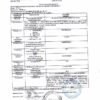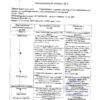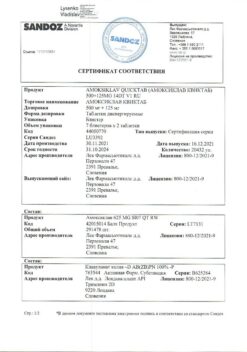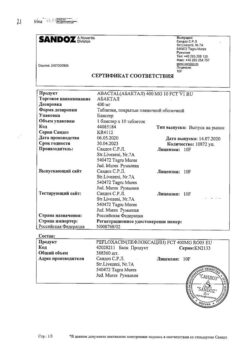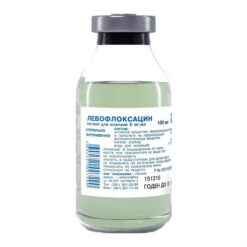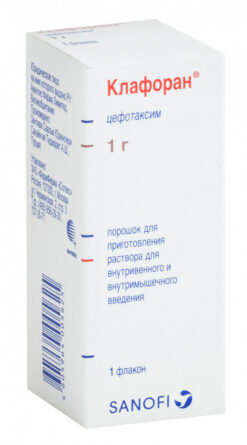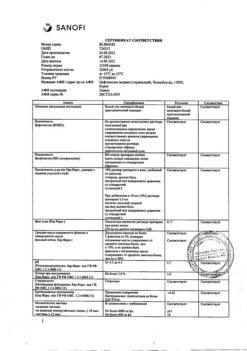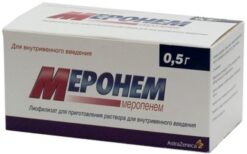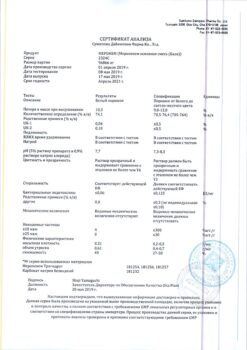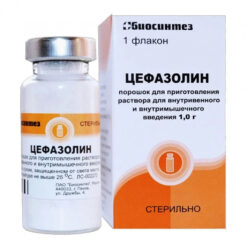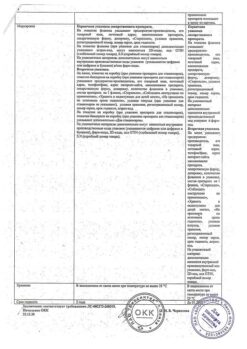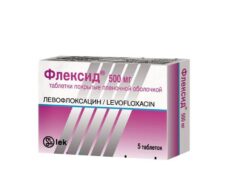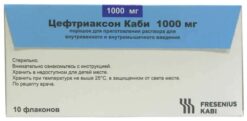No products in the cart.
Description
Pharmacotherapeutic group: antimicrobial agent – sulfonamide
ATX code: D06BA05
Pharmacological properties: Streptocid is an antimicrobial bacteriostatic agent. Mechanism of action is due to competitive antagonism with paraaminobenzoic acid (PABA) and inhibition of dihydropteroatsynthetase, which leads to disruption of dihydrofolic and then tetrahydrofolic acid synthesis and as a result – to disruption of microbial nucleic acid synthesis.
The activity is shown against Gram-positive and Gram-negative microorganisms: Escherichia coli, Shigella spp., Vibrio cholerae, Clostridium perfringens, Bacillus anthracis, Corynebacterium diphtheriae, Yersinia pestis, Chlamydia spp.
Pharmacokinetics: When administered in the body streptocide is quickly absorbed. The highest concentration of the drug in blood is created 1-2 hours after administration. After 4 hours it is detected in cerebrospinal fluid. It is excreted mainly (90-95%) by the kidneys.
Indications
Indications
Streptocide is used in complex therapy for the treatment of purulent wounds, infected burns and other purulent-inflammatory processes of soft tissues.
Pharmacological effect
Pharmacological effect
Pharmacotherapeutic group: antimicrobial agent – sulfanilamide
ATX code: D06BA05
Pharmacological properties: Streptocide is an antimicrobial bacteriostatic agent. The mechanism of action is due to competitive antagonism with para-aminobenzoic acid (PABA) and inhibition of dihydropteroate synthetase, which leads to disruption of the synthesis of dihydrofolic and then tetrahydrofolic acid and, as a result, to disruption of the synthesis of nucleic acids of microorganisms.
Activity is manifested against gram-positive and gram-negative microorganisms: Escherichia coli, Shigella spp., Vibrio cholerae, Clostridium perfringens, Bacillus anthracis, Corynebacterium diphtheriae, Yersinia pestis, Chlamydia spp., Actinomyces israelii, Toxoplasma gondii.
Pharmacokinetics: When introduced into the body, streptocide is rapidly absorbed. The highest concentration of the drug in the blood is created 1-2 hours after administration. After 4 hours it is detected in the cerebrospinal fluid. It is excreted predominantly (90-95%) by the kidneys.
Special instructions
Special instructions
During therapy, it is recommended to drink plenty of alkaline fluids.
Active ingredient
Active ingredient
Sulfanilamide
Composition
Composition
Sulfanilamide (streptocide) – 2.0 g.
Pregnancy
Pregnancy
Contraindicated for use in the first and second trimesters of pregnancy and lactation
Contraindications
Contraindications
Hypersensitivity to sulfonamides, pregnancy, lactation. Diseases of the hematopoietic system, inhibition of bone marrow hematopoiesis, anemia, azotemia, thyrotoxicosis, chronic heart failure, renal failure, porphyria, liver failure, congenital deficiency of glucose-6-phosphate dehydrogenase.
Side Effects
Side Effects
Possible allergic reactions, headache, dizziness, nausea, vomiting, dyspepsia, cyanosis, leukopenia, agranulocytosis, crystalluria.
Interaction
Interaction
Myelotoxic drugs increase the manifestations of hematotoxicity of the drug.
Overdose
Overdose
Symptoms: nausea, vomiting, intestinal colic, dizziness, headache, drowsiness, depression, fainting, confusion, blurred vision, fever, hematuria, crystalluria; with prolonged overdose – thrombocytopenia, leukopenia, megaloblastic anemia, jaundice.
Treatment: ingestion of liquid; in case of accidental ingestion, gastric lavage.
Storage conditions
Storage conditions
List B. In a dry place, protected from light, at a temperature not exceeding 25? C. Keep out of the reach of children.
Shelf life
Shelf life
5 years. Do not use after expiration date.
Manufacturer
Manufacturer
Lyumi, Russia
Additional information
| Shelf life | 5 years. Do not use after the expiration date. |
|---|---|
| Conditions of storage | List B. In a dry, light-protected place at a temperature not exceeding 25?C. Keep out of reach of children. |
| Manufacturer | Lumi, Russia |
| Medication form | powder for external use |
| Brand | Lumi |
Related products
Buy Streptocide, powder 2 g with delivery to USA, UK, Europe and over 120 other countries.

